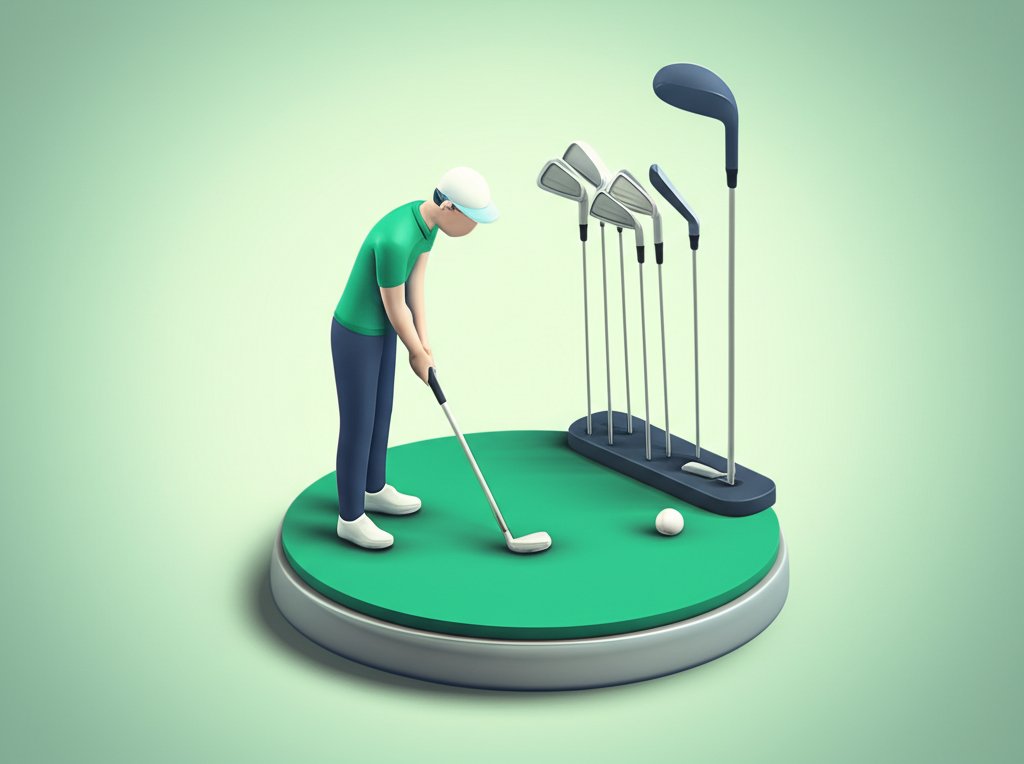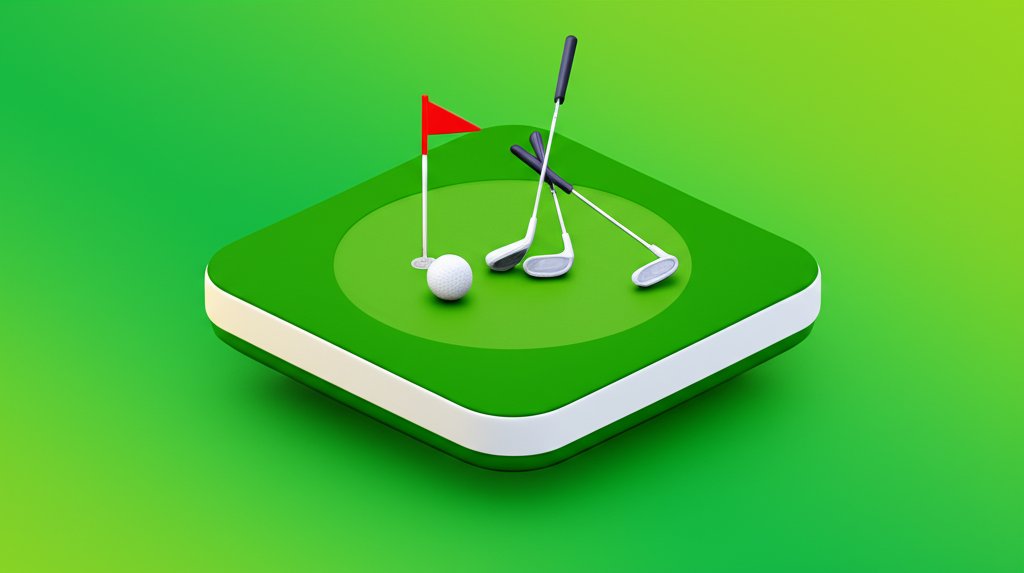Navigating the world of golf can sometimes feel like deciphering a secret code, especially when it comes to understanding your golf clubs and their names. The right equipment, and knowing precisely when and how to use it, can significantly boost your performance and enjoyment on the course. From that powerful first swing off the tee to the satisfying clink of the ball dropping into the hole, each club in your bag has a distinct purpose. This comprehensive guide will break down the essential tools of the game, clarifying their names, features, and optimal uses, whether you’re a beginner building your first set or an experienced player looking to refine your golf course strategy.
The Driver: Unleashing Maximum Power and Distance
Let’s start with the headliner of your golf bag: the driver. This is the club most golfers reach for from the tee box, aiming for maximum distance. It’s designed to send the golf ball soaring as far as possible down the fairway.
What Makes a Driver Unique?
- Striking Design: Drivers are recognizable by their oversized clubhead, often made from lightweight titanium or composite materials, and their exceptionally long shaft. This design allows for a large “sweet spot” to generate high ball speed.
- Lowest Loft: Among all golf clubs, the driver typically features the lowest loft angle, usually ranging from 7 to 12 degrees. Lower lofts (7-9 degrees) are generally favored by experienced players with faster swing speeds for piercing ball flight, while higher lofts (10-12 degrees) offer more forgiveness and help beginners get the ball airborne more easily.
- Optimal Use: Primarily used for the first shot on par 4s and par 5s, the driver’s goal is to position you for the shortest possible second shot. Teeing the ball up slightly higher than other clubs allows for a full, unrestricted swing, unlocking maximum power.
Distance Expectations
While personal swing speed and technique play a huge role, average driving distances provide a good benchmark:
- Men: Recreational male golfers typically achieve drives between 200 and 230 yards.
- Women: Recreational female golfers usually see distances of 150 to 175 yards.
Understanding and mastering your driver is a fundamental step in golf game improvement, setting the stage for every hole.
Fairway Woods: Your Versatile Allies for Length

After your initial drive, you might still face a long distance to the green. That’s where fairway woods come into play. These clubs offer a fantastic balance of distance and control, making them indispensable for longer shots from the fairway or even off the tee on tighter holes.
Features of Fairway Woods
- Beyond the Tee: Unlike drivers, fairway woods are designed to be hit effectively from the ground, although they can also be used off a tee. They feature slightly smaller heads than a driver and shorter shafts, providing more control.
- Numbered Lofts: Commonly found as 3-woods (around 15 degrees loft), 5-woods (around 18 degrees), and 7-woods (around 21 degrees), each offers progressively more loft and a higher ball flight, making them easier to hit but with slightly less distance than their lower-lofted counterparts.
- Strategic Advantage: Fairway woods are excellent for long par 3s, second shots on par 5s, or when you need significant distance but require more accuracy than a driver might provide. Their versatility makes them a cornerstone of effective golf equipment.
Hybrids: The Best of Both Worlds
Hybrids are the “multitools” of the golf bag, ingeniously bridging the gap between the power of fairway woods and the precision of irons. They’ve become incredibly popular for their ease of use and forgiveness.
Why Choose a Hybrid?
- Iron-Wood Combination: Hybrids combine the familiar feel of an iron’s shaft length with the larger, rounded head of a wood. This design provides a larger sweet spot and a lower center of gravity, which helps get the ball airborne more easily.
- Long Iron Replacement: Many golfers find long irons (2, 3, 4 irons) challenging to hit consistently due to their lower loft and smaller clubface. Hybrids offer a more forgiving alternative, especially for shots from the rough or tricky lies (the position of the ball on the ground), delivering comparable distance with greater accuracy and a higher trajectory.
- Versatility on the Course: These clubs excel in a variety of situations: long approach shots, navigating out of light rough, or even from the tee on short par 4s. Adding a hybrid to your bag can dramatically improve your club selection versatility.
Irons: Precision Instruments for Every Distance
Irons are the workhorses of your golf bag, absolutely crucial for fine-tuning your approach to the green. They are all about accuracy, control, and shaping shots to land precisely where you intend.
Understanding the Iron Set
- The Number System: Irons are typically numbered from 3 through 9, with additional specialty irons like a pitching wedge (PW). Each number signifies a different loft angle, dictating the distance and trajectory (the path the ball takes through the air) of the shot.
- Long Irons (2, 3, 4): Have the least loft and the longest shafts, designed for maximum distance among irons. These can be challenging to hit, leading many golfers to swap them for hybrids.
- Mid Irons (5, 6, 7): Offer a balanced combination of distance and control, ideal for a wide range of approach shots.
- Short Irons (8, 9): Feature higher lofts and shorter shafts, providing maximum control for shots closer to the green, allowing the ball to land softly.
- Evolution of Design: Modern irons often feature cavity backs and perimeter weighting, distributing weight around the clubhead’s edges. This design significantly increases forgiveness (the club’s ability to minimize the impact of off-center hits), improving accuracy and distance even on mishits.
When to Use Irons
Irons are especially effective when precision is key—whether you’re trying to land the ball softly on the green, escape from a tricky spot in the rough, or execute a controlled punch shot under tree branches. Mastering your iron selection is vital for consistent scoring.
Wedges: Short-Game Wizards for Finesse

If you want to get the ball as close to the hole as possible from short range, you’ll need to master your wedges. These clubs are your secret weapon around the green, integral for short game success. They are designed to lift the ball up quickly and land it softly with minimal roll.
Types of Wedges and Their Uses
Wedges are characterized by their high loft angles, allowing for those controlled, high-arcing shots. Most golfers carry at least two, often three or four, different wedges:
- Pitching Wedge (PW): Typically ranging from 44-48 degrees of loft, the PW is used for full swings from about 80-120 yards out, as well as for chipping and pitching closer to the green.
- Gap Wedge (GW or AW – Attack Wedge): With lofts between 50-54 degrees, the gap wedge fills the distance void between the pitching wedge and the sand wedge, providing a crucial option for intermediate distances.
- Sand Wedge (SW): Usually 54-56 degrees of loft, the sand wedge is specifically designed for escaping bunkers due to its wide sole (the bottom of the club). It’s also excellent for high, soft pitch shots around the green from grass.
- Lob Wedge (LW): Sporting the highest lofts, typically 58-60 degrees (and sometimes even 64 degrees), the lob wedge is for extremely high, soft shots that stop quickly on the green, often used over hazards or in tight situations where you need to drop the ball precisely.
Becoming proficient with your wedges is often the key to shaving strokes off your score. Many professionals attribute up to 60% of their scoring to effective golf club loft understanding and short game play.
The Putter: The Art of the Final Touch
Last but certainly not least, we have the putter. Some golfers will argue that it’s the most important club in your bag. Why? Because it’s used for the final shot, the one that determines whether you make par, birdie, or something else entirely. It’s the ultimate test of your putting tips and touch.
Key Characteristics of a Putter
- Precision, Not Power: The putter is specifically designed to roll the ball smoothly and accurately into the hole on the green. It has minimal loft (usually 2-4 degrees) and a flat clubface, prioritizing consistent roll and direction over distance.
- Variety of Styles: Putters come in countless designs, materials, and lengths to suit individual preferences and putting strokes. Common styles include:
- Blade Putters: Traditional, slender designs offering a good feel for the ball.
- Mallet Putters: Larger, often uniquely shaped heads with perimeter weighting and alignment aids, offering more forgiveness and stability.
- The Feel Factor: Success with a putter hinges entirely on your ability to develop a consistent stroke and a good feel for distance. This is the club that can truly make or break your score, demanding focus and a delicate touch.
Master Your Game Through Knowledge and Practice
Understanding the names of golf clubs and their specific functions is the first step towards unlocking your full potential on the course. Each club is a specialized tool engineered for particular situations and shot types. By knowing when to reach for your driver, fairway wood, hybrid, iron, wedge, or putter, you gain a significant strategic advantage.
The journey to golf mastery is ongoing. Experiment with different clubs, pay attention to how they perform in various conditions, and, most importantly, practice regularly. A well-rounded golf set combined with a thoughtful golf strategy will give you the versatility and options you need to tackle any course and continuously improve your game.
- Unforgettable: Talking Stick Golf Club Review – Desert Golfing Redefined - November 17, 2025
- Discover Talega Golf Club: Championship Golf & Spanish Hospitality Awaits! - November 15, 2025
- Is Strawberry Farms Golf Club Orange County’s Best Kept Secret? - November 13, 2025









